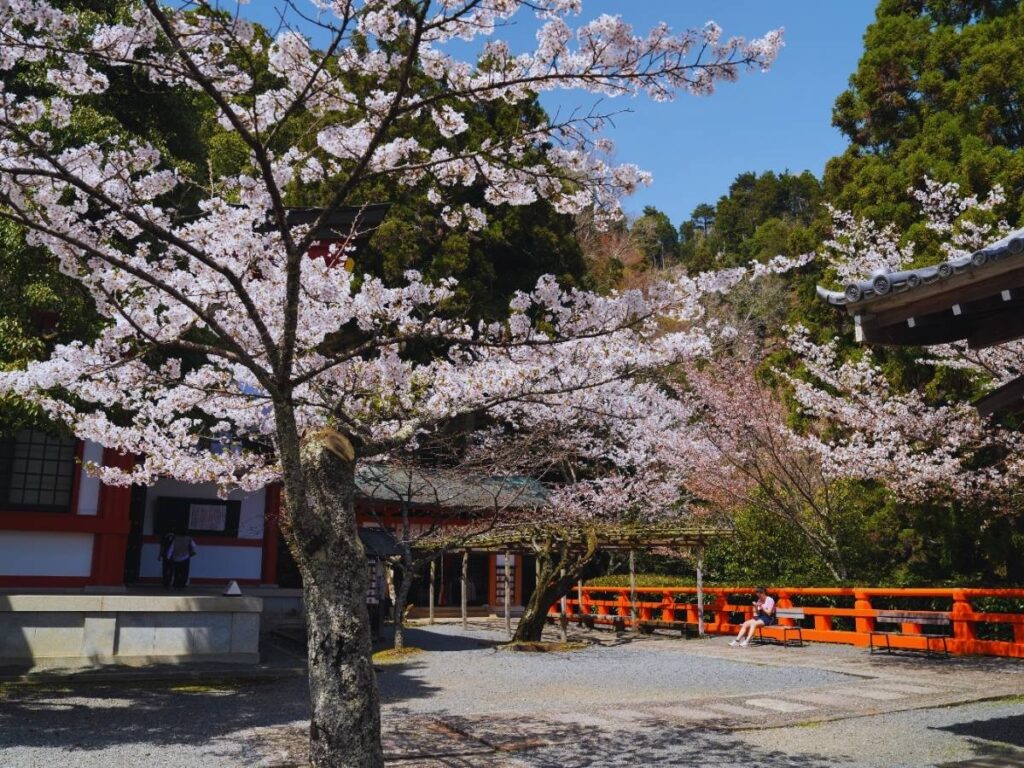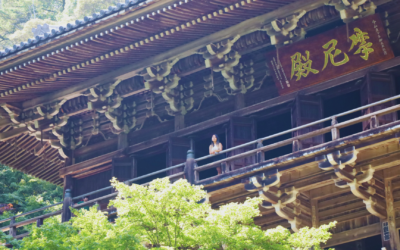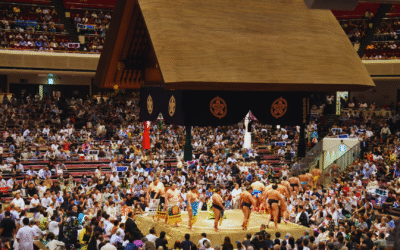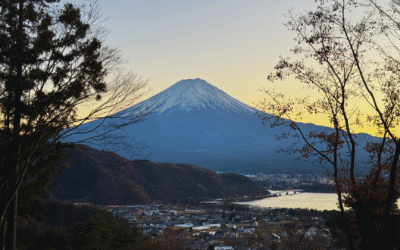Sometimes when you’re in Kyoto, you just want to get out of the city and breathe for a second. Not into a packed tourist spot, but somewhere quiet, green and kind of magical.
That’s exactly what the Kurama to Kifune hike felt like for me — a peaceful little adventure through ancient forests, past old temples and shrines, like I’d accidentally stepped into some secret pilgrimage.

I went in early spring, when the sakura were just starting to pop. Little clusters of soft pink blossoms here and there against a backdrop of dark cedar forests — honestly, it couldn’t have been better timed. And the best part? It was super easy to get to, and even though it’s a “hike”, it’s not hardcore at all. You don’t need to be super fit or have any special gear — just a decent pair of shoes and a bit of curiosity.
If you’re after a half-day escape where you can slow down, soak up the beauty, and feel a tiny bit like a wandering monk (without actually having to sleep rough in the mountains), this is your hike.
Want to Discover More Hidden Gems Like This?
This Kurama to Kifune hike is the kind of authentic experience we love building into our clients’ trips. If you want a Japan itinerary filled with unique local adventures beyond the main tourist path, our travel planners can design a trip just for you.
Learn more about our Custom Travel Planning service.
Getting There – From Kyoto to Kurama Station

Starting out from Kyoto, I made my way to Demachiyanagi Station, right up in the north of the city. From there, I caught the Eizan Dentetsu Line — a cute little two-car train that feels more like a countryside tram than a city train. I headed towards Kurama, which is the very last stop on the line, so there’s no real way to mess it up.
The ride only took about 30 minutes and cost me 430 yen one way. If you’ve got an IC card like ICOCA or Suica, you can just tap in and out — no need for tickets. The view starts off with houses and shops flashing past, but pretty soon it’s all trees, hills, and little rivers zipping alongside the tracks.
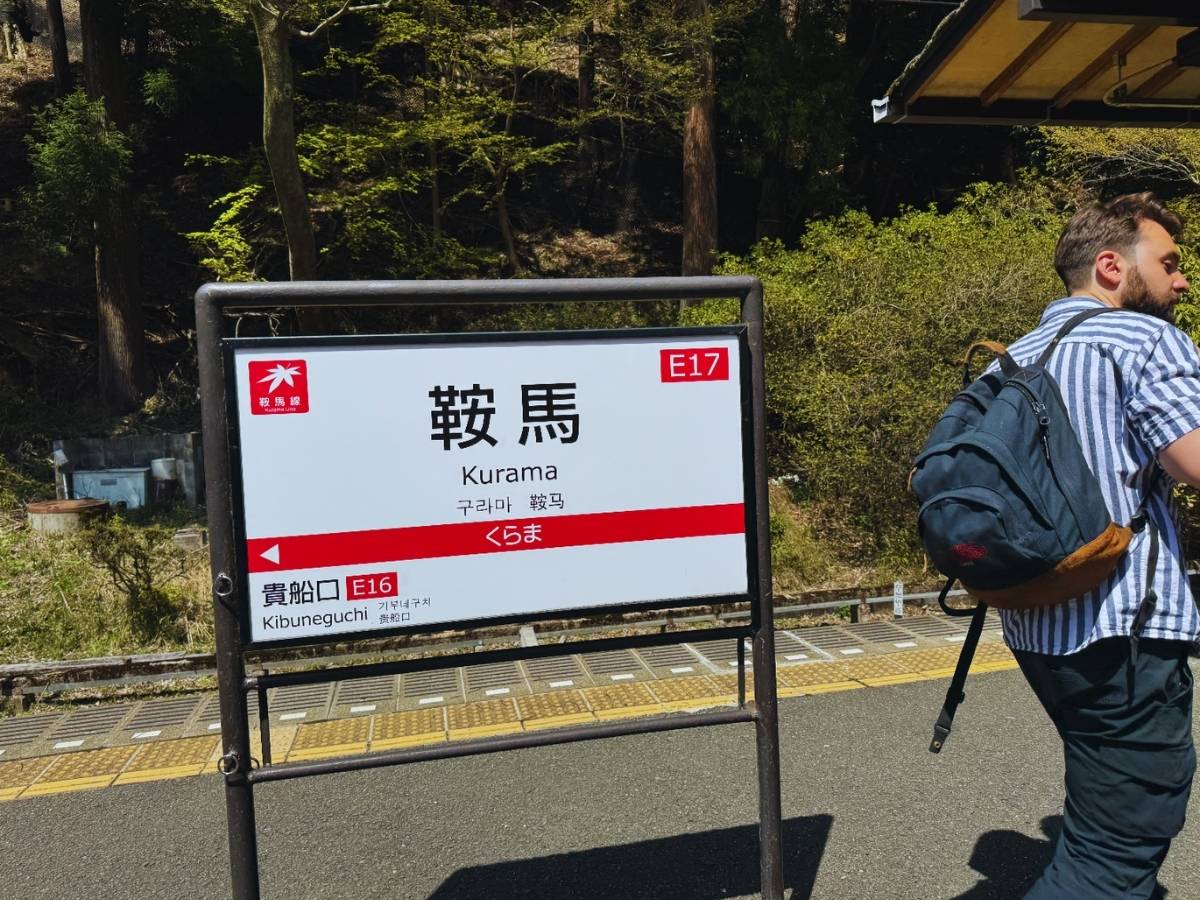
When the train finally pulled into Kurama Station, it was like arriving in another world. I turned right and walked a couple of minutes along the only main road there. It’s super obvious — you pass a few sleepy inns and a souvenir shop or two.
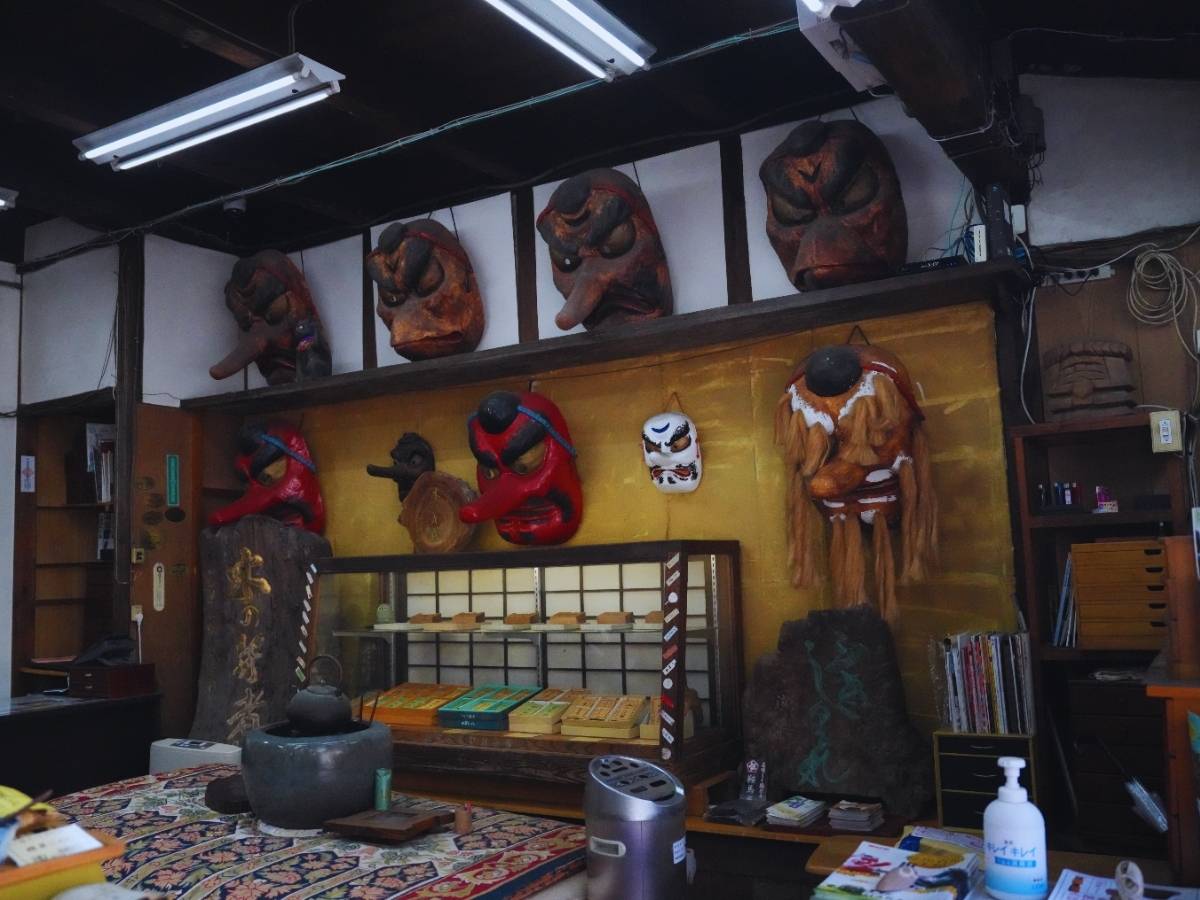
Before long, I spotted the big wooden torii gate that marks the entrance to Kurama-dera Temple — that’s where the hike officially begins. Right after entering, the trail starts to gently climb, and you’ll be greeted by a wide stone staircase lined with bright red lanterns on both sides.
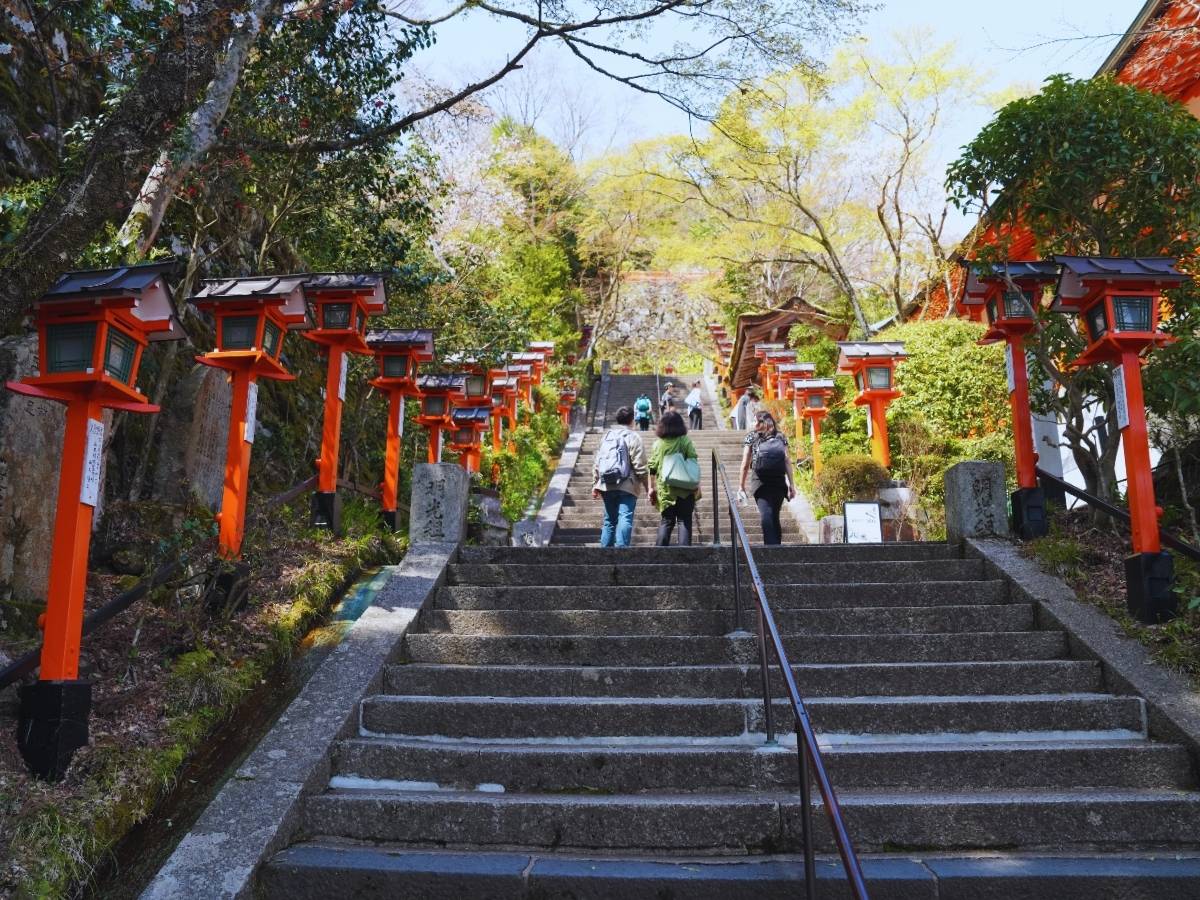
It’s a seriously photogenic spot — one of those classic Kyoto scenes that feels straight out of a postcard. The steps can be a bit of a warm-up, but it’s a beautiful stretch to walk through if you’re taking the trail on foot.

After a few minutes of walking, I reached the ticket counter and paid the 300 yen admission fee. It’s cash only, so keep a few coins handy. Just past that, I opted to take the cable car, which costs an extra 200 yen.
You buy your ticket inside the building, then hop onto this cute little slope car that takes you partway up the mountain. It’s a short ride, but a relaxing one, and you skip some of the steeper early trail sections — especially nice if your legs aren’t feeling it.

Once off the cable car, the trail continues uphill through the forest. It was quiet and peaceful, and the path led me through towering cedar trees with the sound of birds and wind filling the space — a completely different vibe from city Kyoto.
Not long after, I arrived at Yuki Shrine, tucked off the path to the right. If you’re not paying attention, you might miss it, but it’s one of the key spiritual spots on the mountain. I stopped for a moment to bow and take in the peaceful setting — it felt right, even if I didn’t follow any formal ritual.

A little further along, the trail winds through more towering cedar trees — many of them wrapped with thick ropes and paper streamers. These aren’t just decoration. The ropes are called shimenawa, and they mark the trees as sacred, often believed to house spirits or act as spiritual conduits. Walking through this part of the forest feels quiet and powerful in a way that’s hard to describe — like the mountain’s watching, but in a calm, protective kind of way.
After another short climb, I found myself facing the Main Hall of Kurama-dera. It felt like a proper milestone — rooftops peeking through the trees, and if you turn around, a pretty rewarding view over the valley below. I stopped for a quick breather before tackling the final flight.
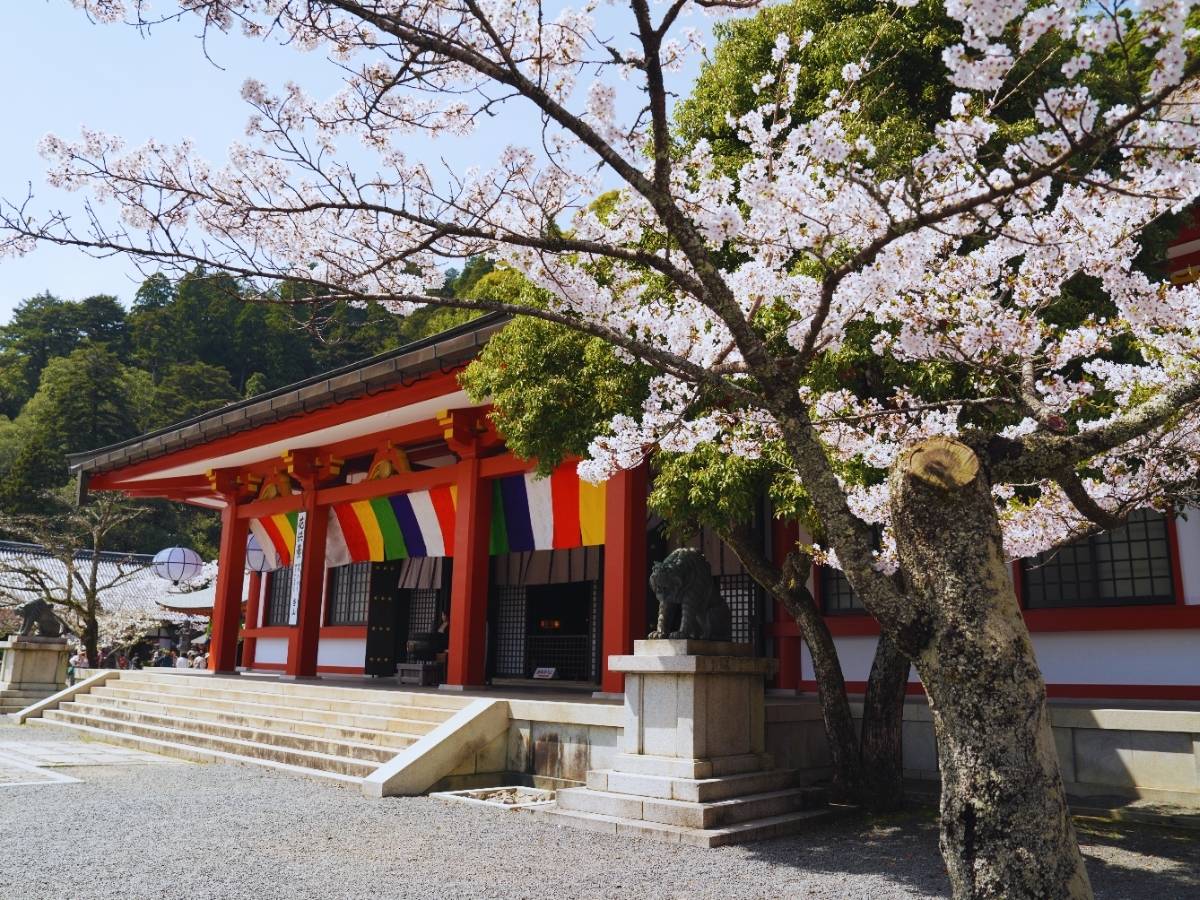
Just past the Main Hall, there’s a short side path that leads to a small bell tower nestled into the hillside. If you’ve got a moment, it’s worth the quick detour. You’re allowed to ring the bell once — gently — to make a wish. I gave it a light tap, partly for the tradition, partly just because ringing a bell on a mountain feels like something you should do at least once. The view from here opens up a little too, giving you a peek out over the forested hills.
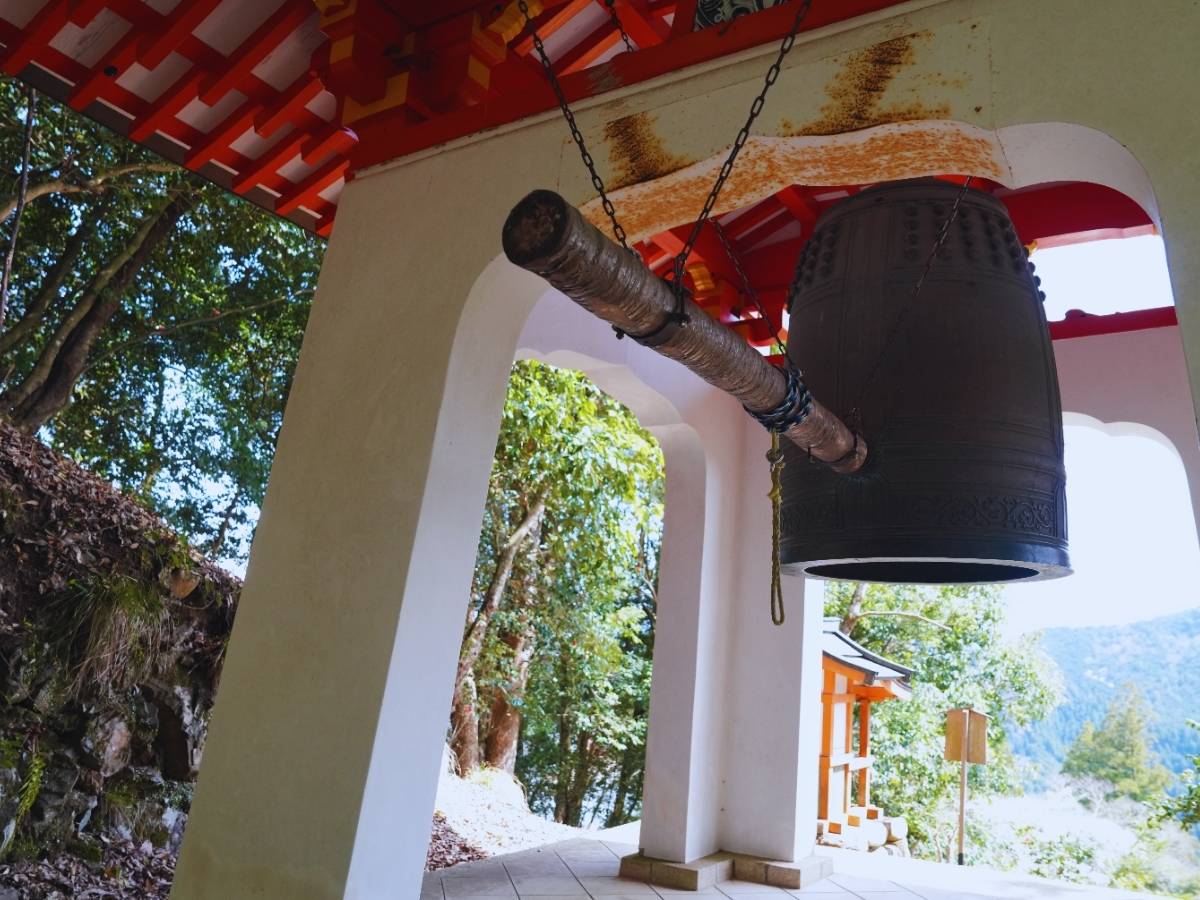
Later on, deeper into the forest past the main hall, the trail cuts across the Kinone Sando, or “Tree Root Path.” The ground is all twisted and uneven with thick cedar roots everywhere — it’s like something out of a fantasy film. You’ll want to watch your step here, but the vibe is unreal.

Keep an eye out for Osugi Gongen, a quiet little shrine dedicated to the ancient cedar spirits. This is a spot where Shinto and Buddhist beliefs blur — it’s believed these gongen deities are both kami and Buddhas. The space is simple, but powerful. Even the water basin has this calm, reflective feel.
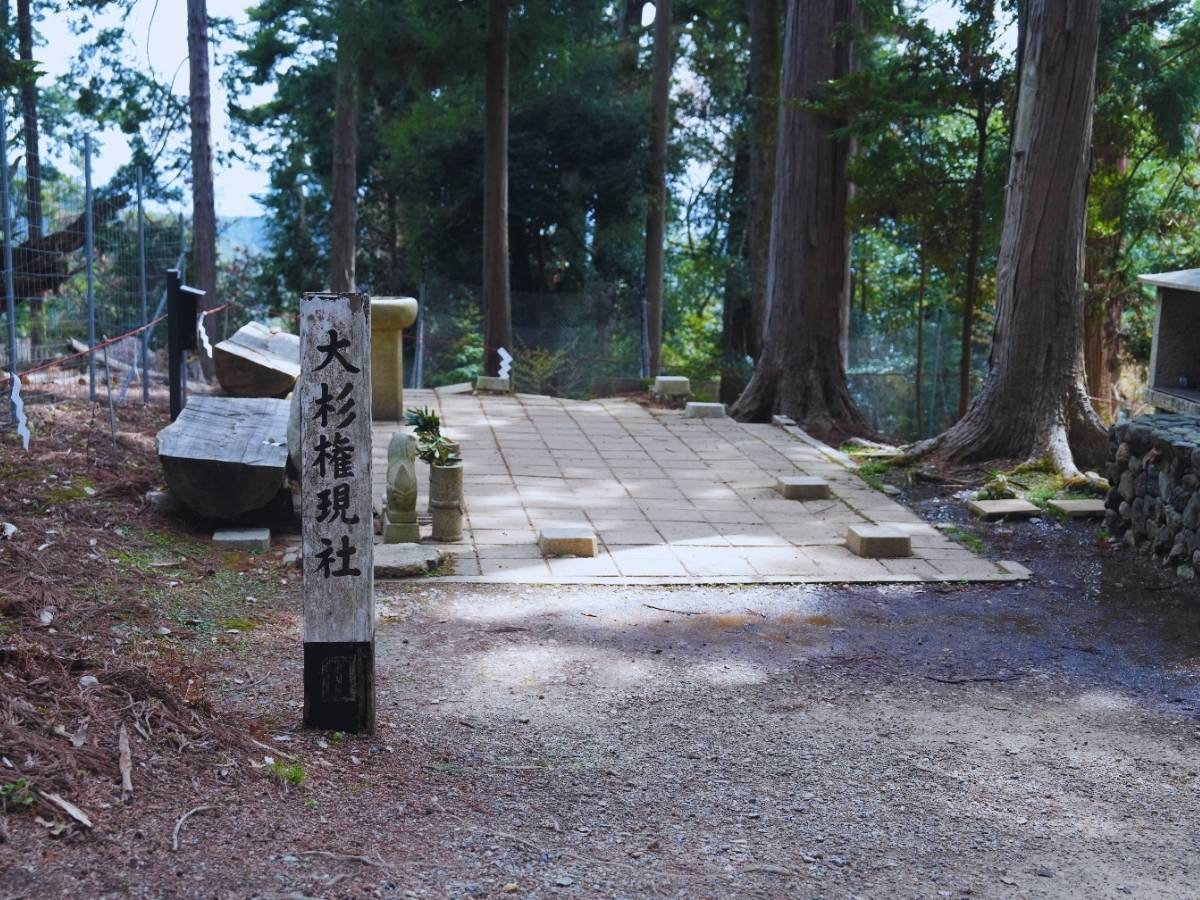
Near the end of this upper trail is the Sekurabe Ishi, or “Height Comparison Rock,” where young Minamoto Yoshitsune is said to have measured his height while training with the mountain tengu. It’s a fun little nod to myth and legend.
The steps led down into a slightly deeper part of the woods, and after a few minutes, I arrived at a small temple building tucked into the side of the trail: the Sojo-ga-Dani Fudo-do. This is one of the sub-temples of Kurama-dera and houses an image of Fudo Myoo, the Immovable King of Light in Buddhist mythology.

It’s a simple little hall — nothing grand — but there’s something solid and grounded about it, fitting for a figure known for unshakable strength. I stopped for a second to have a look, said a quiet thank you in my head (seemed like the right thing to do), and kept moving.
A little further down, I reached another sub-temple, the Oku-no-In Mao-den. This hall enshrines Mao, the Magic King being. I didn’t know much about the mythology beforehand, but standing there, it was easy to imagine all sorts of old legends growing out of a place like this. The building blends into the woods so naturally, it almost feels like it grew there.

After leaving Maō-den, the trail started sloping down pretty quickly. The steps were a bit uneven, but nothing too rough — just that kind of steady descent where your knees suddenly remember they exist. It didn’t take long before I could hear water again, and the air started to feel a bit cooler and fresher.
Within maybe 10–15 minutes, I popped out of the forest and onto a little red bridge — and just like that, I was in Kifune.

The contrast was wild. One second you’re deep in quiet mountain woods, and the next you’re standing in a charming riverside village, with cafés, ryokan, and the sound of the stream bubbling along beside you. Super peaceful, and honestly such a nice way to end the hike.
After crossing the river and stepping into Kifune village, it didn’t take long to spot the entrance to Kifune Shrine. That bright red torii gate is hard to miss — it kind of feels like it’s welcoming you into a different space again, just as peaceful, but in a different way than the deep mountain forest.

Walking up the stone steps lined with red lanterns felt like such a classic moment — the kind of path you’ve probably seen in a hundred photos, but it still hits differently when you’re actually there. I ended up stopping a few times just to take it in (and also to catch my breath — it’s steeper than it looks).
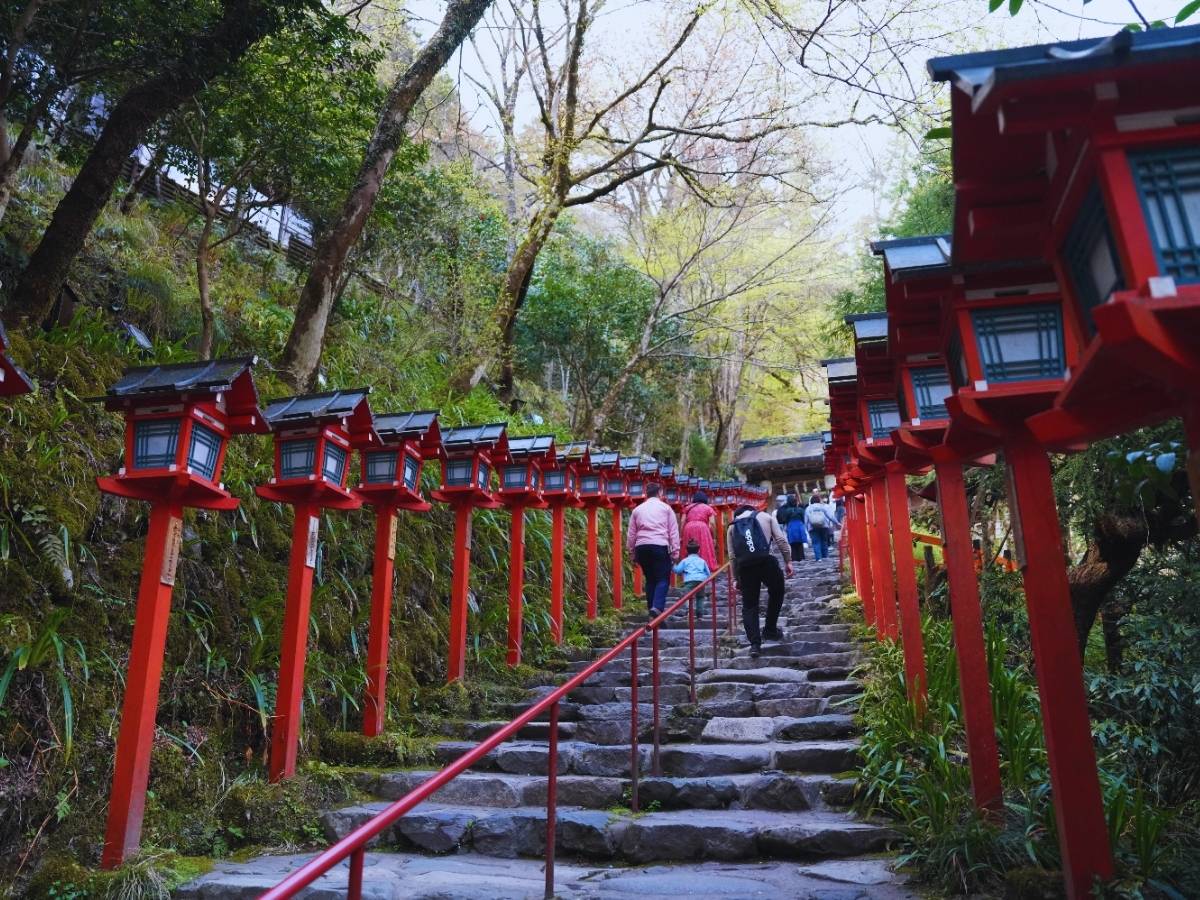
At the top, the shrine grounds open up and it’s surprisingly spacious. There’s a water basin for purification, beautiful wooden buildings, and the sound of the nearby stream running softly in the background. The whole shrine is tied to the concept of water — it’s believed to house the deity of rain and rivers, which totally makes sense given how central water is here.

One of the coolest things you can do at Kifune Shrine is try the water omikuji — instead of reading your fortune straight off the paper, you place a blank-looking slip into spring water and your fortune slowly appears. It’s so simple, but kind of magical. Mine said something vague but positive, which I’ll take.
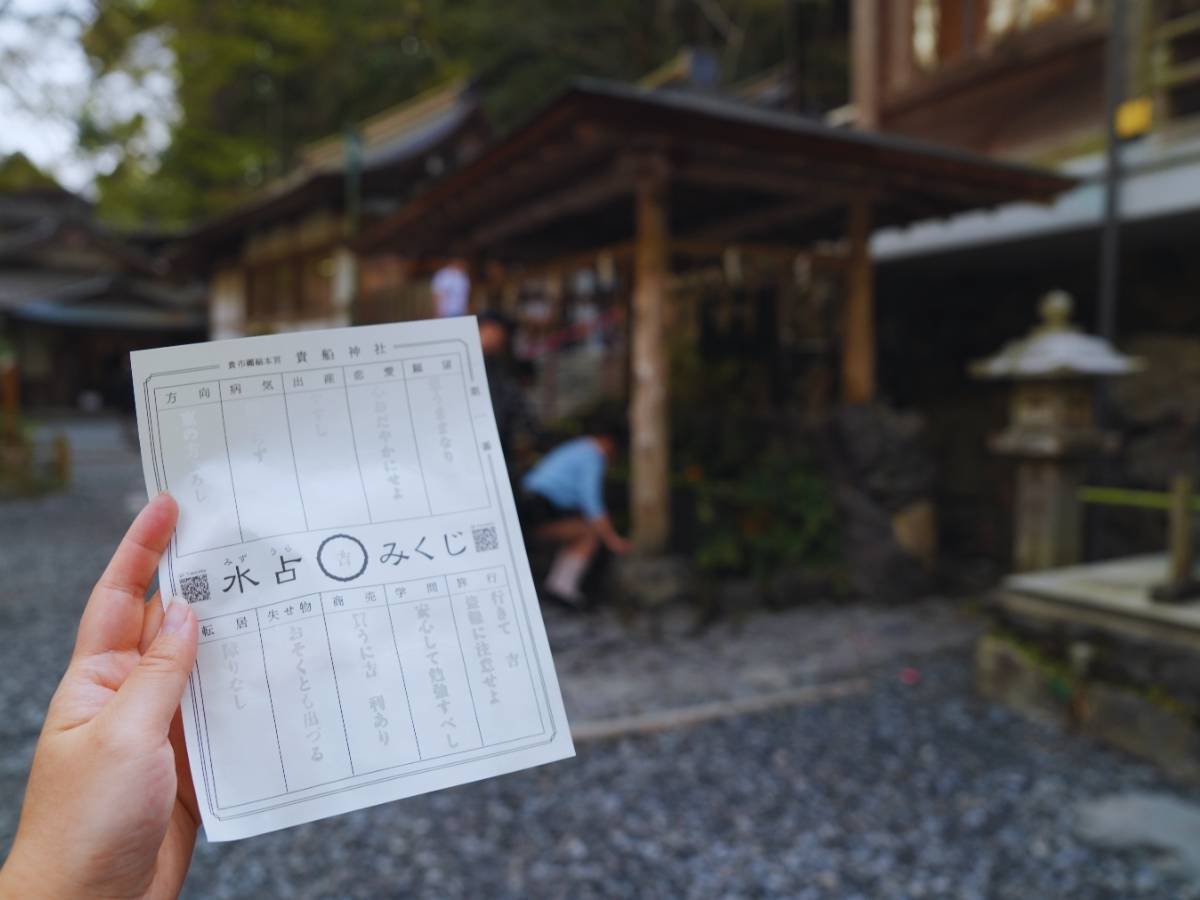
There were also some lovely details around the shrine — like a painting of a dragon tucked under the eaves of one of the halls, little charms hanging in rows, and those neat ema boards where people write wishes and prayers. It’s got just enough going on to explore, but not so much that it feels overwhelming.

Experience More of Japan’s Spiritual Culture
The water omikuji at Kifune Shrine is a perfect example of Japan’s interactive spiritual traditions. If you love these kinds of unique cultural moments, we can arrange other special experiences for you, from a private tea ceremony in Kyoto to a Zazen meditation session with a local monk.
Browse our bookable Cultural Experiences.
Getting Back to Kyoto
Once you’ve had your fill of Kifune Shrine and the peaceful little village, it’s really easy to head back to Kyoto.
From the shrine, just walk a few more minutes uphill along the road. You’ll find a small bus stop called Kifune (look out for it — it’s not super big).
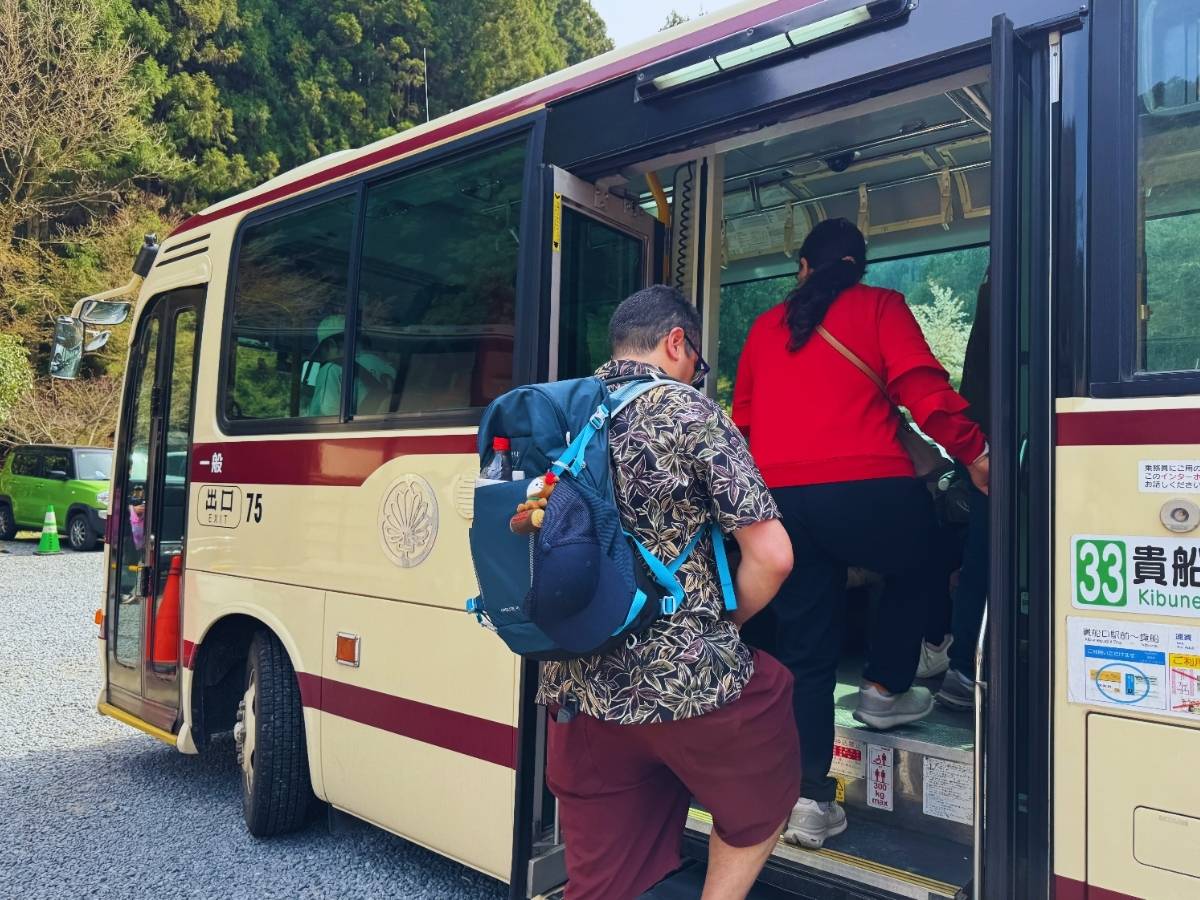
From there, you can hop on a bus that takes you about 5 minutes downhill to Kifuneguchi Station. The buses are pretty regular, but if you’ve just missed one, you can also walk — it’s about 20–30 minutes on foot, mostly downhill along a quiet road. Not a bad walk if the weather’s good.
At Kifuneguchi Station, catch the Eizan Dentetsu Line back toward Kyoto. Just like before, ride it all the way to Demachiyanagi Station. From there, you can easily transfer to other trains or subways depending on where you’re staying.
And that’s it — you’ve officially completed the Kurama to Kifune pilgrimage hike!
Need-to-Know Basics
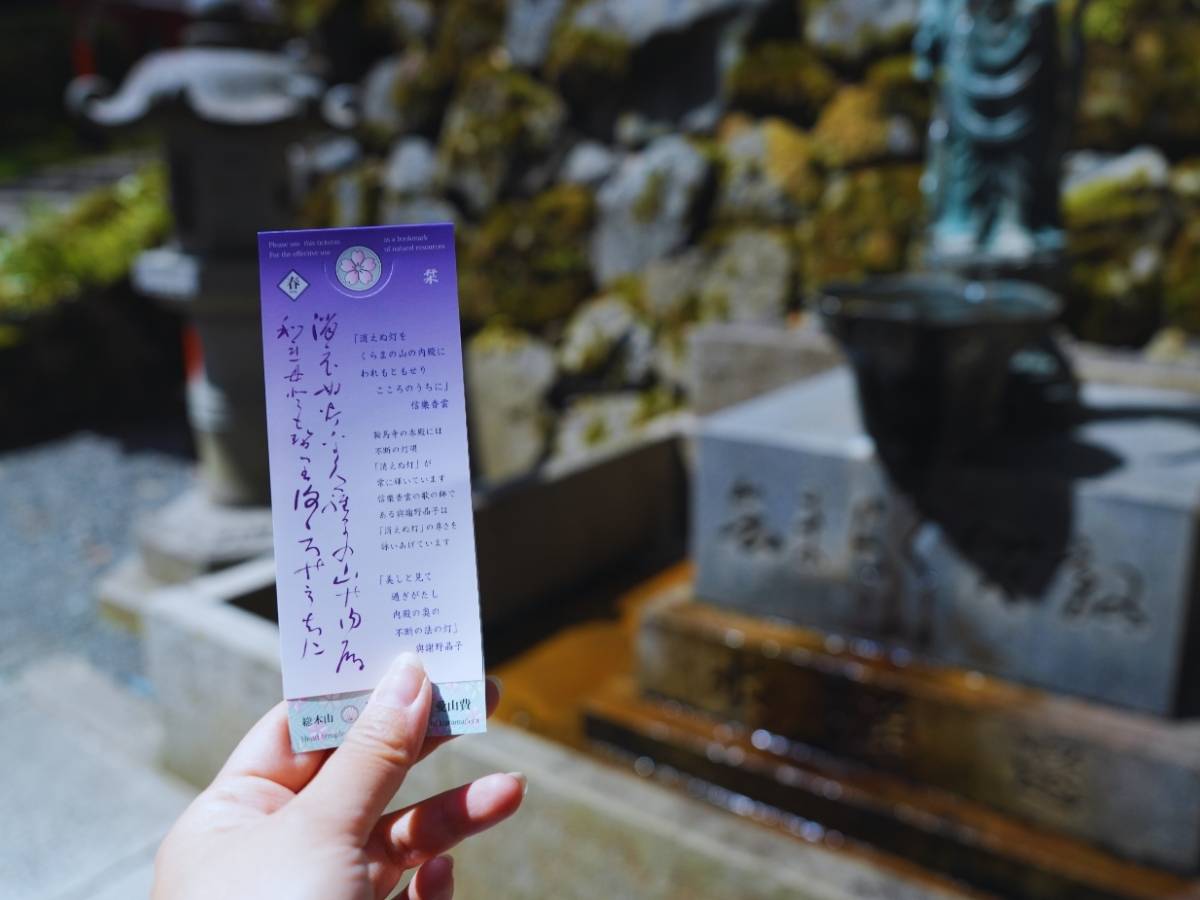
Here’s a quick breakdown if you’re planning your own hike:
- Duration: About 2 to 3 hours total, depending on your pace and how long you linger at the temples and shrines
Difficulty: Easy to moderate (some uneven steps and mild climbs, but nothing extreme) - Best time to go: Spring (for sakura), autumn (for colourful leaves), or early summer (for lush greenery)
- Getting there:
- From Demachiyanagi Station in Kyoto, take the Eizan Dentetsu Line to Kurama Station (30 mins, 430 yen one way)
- Entry Fees:
- Kurama-dera admission: 300 yen
- Optional cable car ride up to Kurama-dera: 200 yen
- Kifune Shrine omikuji: about 300–500 yen depending on type
- Facilities:
- Toilets available near Kurama-dera and at Kifune Shrine
- Small cafes and restaurants in Kifune village
- What to Wear: You’ll want comfortable walking shoes for the uneven paths. If you’re wondering what else to pack for Japan’s varied activities and seasons, our guide on what to wear in Japan has you covered.
Why The Kurama to Kifune Hike is a Must-Try

If you’re looking for something beyond the usual temples and crowds of Kyoto, this hike between Kurama and Kifune is such a perfect little adventure. It’s close enough to the city that it’s easy to fit into your trip, but feels like a whole different world once you’re in the forest, walking from shrine to shrine and soaking in all that peaceful energy. It’s an easy way to add something truly special to your Japan visit.
Check out our list of top things to do in Japan.
Plus, places like Kifune Shrine, with its water omikuji and peaceful river setting, give you a real glimpse into the quieter, more spiritual side of Japan that not everyone gets to experience.
And if you’re keen to discover even more hidden gems like this — places that go beyond the typical tourist spots — definitely check out what we offer at Flip Japan Guide. Basically, if you want your Japan trip to feel a little less “tour group” and a little more your own, we’ve got you.
This Kurama to Kifune hike is just the beginning — there’s a whole lot more of Japan waiting for you to explore.

